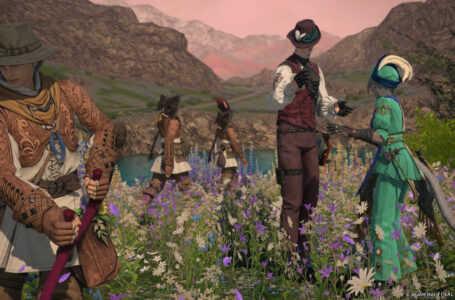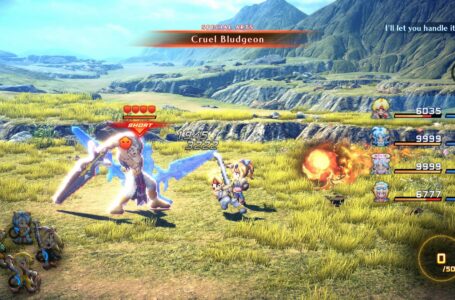Actraiser Renaissance: a worthy new update to a cult classic
It was just a few weeks ago that I was musing on how Quintet’s Super NES games could do with some sort of remaster or remake, wasn’t it? Now here we are with Actraiser Renaissance, a brand new version of Actraiser — not technically part of the “Heaven and Earth” games I was talking about in that piece, but absolutely relevant to the discussion, and very much a spiritual precursor to Soul Blazer, Illusion of Gaia and Terranigma, for sure. Plus it has music by Yuzo Koshiro, so you know it’s worth playing.
For the unfamiliar, Actraiser is a game that was originally released in 1990 for the Super NES. It was an early title for the platform, but it was a good showcase of what 16-bit gaming promised: evolution of classic mechanical formulae combined with creative game structure, increased focus on storytelling and an overall greater sense of scale and ambition.

In Actraiser, you take on the role of the Lord of Light (also known as The Master in the localised version of the original, and literally just God in the Japanese original) as you attempt to reverse the corruption that the Dark Lord Tanzra has blighted the land with.
Tanzra was known as Satan in the Japanese original; it wasn’t so much religious allegory as… well, a pretty literal take on the Judaeo-Christian faith. The original changes to the script came about as a result of Nintendo of America’s notoriously strict policies over what was and was not acceptable content in their games back in the ’80s and ’90s, but Actraiser got off relatively lightly; despite the name changes, the religious aspect was still exceedingly obvious, as it would be difficult to take it out of the game without fundamentally changing what the game actually is.
Tanzra is a “god game”, you see, in which your character is actually a benevolent deity watching over a faithful people. Except unlike other god games of the period — Bullfrog’s Populous is probably the most famous example — there are also times when you take a more direct approach to smiting evil, and these are represented through platforming hack-and-slash sequences where you battle your way through challenging levels and eventually take down powerful bosses. Indeed, the whole game opens with one of these — presumably developer Quintet felt console players would want something relatively “familiar” to play with before unleashing the most distinctive and interesting part of the game.

Once you’ve cleared the first “act” of each of the game’s stages, your attention turns to the settlement you’re attempting to resurrect. Your faithful have built you a temple, and from there it’s up to you to guide them where they should be building roads. Once they’ve built those roads, they’ll automatically build structures along them, including farms to harvest food, workshops to create resources and houses in which to live.
Through this process, your town’s population will begin to expand, and your responsibility through all this is to continually guide them, clear crap out of the way by setting fire to it with divine lightning and, of course, using your angel minion to fend off the near-constant monster attacks from the various nearby lairs. Your eventual goal in each of the game’s regions is to seal up all of the monster lairs, then proceed to a second platformer stage in which you will face some sort of great evil and finally purify the area once and for all.
That’s how the Super NES version worked, anyway. It had some depth, but on the whole it was quite simple and straightforward to play. I suspect most people would have been happy with a simple rerelease of this version, perhaps with fancier graphics — but Actraiser Renaissance gives us much more than that, adding considerable depth to every aspect of the game while still keeping it feeling true to the original game.

For starters, the strategic element is now not just about building roads and shooting monsters while you wait for the population to expand. There is now a structured quest system, where your people will ask you to watch over them while they accomplish specific things — and at semi-regular intervals, you’ll be faced with a “siege” quest, in which monsters will spawn from the surrounding area and you will need to help the people defend the town.
Interestingly, during the siege sequences, the angel is unable to shoot enemies as he can in the basic strategic sections. Instead, your defences consist of the divine miracles that you are able to cast — with different enemies being weak or strong to different miracles — as well as fortifications you have built around the town. These come in two main forms: gatehouses act as a strong barricade that will fight back against monsters attempting to invade, while blockhouses act as long-range observational towers that are staffed by archers — these are the only structure that can take down flying enemies, which appear after you’ve made a certain amount of progress, so they’re essential to make good use of.
Besides adding these tower defence elements, there’s also now a light real-time strategy element, too; early in the game you’re introduced to a “hero” character who participates in the siege battles, and can be commanded to move wherever you want him to on the map. While there, he’ll engage any enemies that come near him, making use of a powerful special ability whenever his magic points are fully charged up — and he can often turn the tide of these battles with proper placement.

Between sieges, there’s a lot more in the way of story and dialogue, too. The angel is now much more than just your cursor; he’s a character in his own right, and quite an entertaining, likeable one too. Likewise, you’ll get to know the hero character and his history over the course of saving the first town — and you’ll get to know the stories of the residents quite well, too.
The strategic sequences in Fillmore, the first area of the game, are quite often interrupted by dialogue and tutorial sequences, but as the game progresses these will become a little less frequent, only popping up when there is actually relevant plot to deliver. The tutorials are quite helpful, too; they do a good job of introducing Actraiser Renaissance’s new features without feeling like they’re forcing you down a particular path too much; they tend to inform you that you have the capability to do something rather than presenting you with a big, patronising arrow saying “put the thing here”. You’re the Lord of Light; you know where to put a fort for maximum effectiveness, surely.
The story sequences are actually a rather good addition. While the original game had some dialogue, Actraiser Renaissance feels like it has a fully fleshed out point to make about organised religion, the reliance on others and the desirability of being able to fend for yourself. The story of the first area’s hero, for example, explores how placing the safety of an entire region on the shoulders of one person can backfire drastically, however — and as a divine entity who has been helping their people get back on their feet, you can’t help but wonder if you should be doing as much as you are.

There are a few other tweaks to the actual gameplay here and there, too. While your population would seal the monster lairs themselves in the Super NES original, in Actraiser Renaissance they simply open the way for you to drop in yourself and splatter the local monster spawner all over the subterranean walls. These provide short action sequences that punctuate the strategic gameplay nicely, while the takes on the original action stages bookend each part of the game’s main scenario nicely.
Speaking of the action stages, they play very well. While combat in the original Actraiser was a bit “stiff”, here there’s a lot more fluidity to it. The Lord of Light has a nice sword combo as well as the ability to strike up and do a powerful drop-down attack, and as you progress through the game you’ll gain access to some powerful magical spells. Arguably a little too powerful, at least early in the game; the Act II boss for Fillmore is an absolute pushover with some well-placed fireballs.
The new visuals are likely to divide opinion somewhat, since they’re not quite traditional pixel art, not quite a “full” HD polygonal take on things, either. Rather, the best way to describe them is that they look like a Sega Saturn game circa 1998; the sprites have a distinctly “prerendered” look about them and animate beautifully fluidly, but the deliberately pixelated look on everything is likely to be something of an acquired taste, for sure. Consequently, your reaction to Actraiser Renaissance’s visuals is likely to be primarily determined by whether or not you think “this looks like a Saturn game” is a compliment. (I love it, personally, but I acknowledge that your mileage may indeed vary.)

There will be no such divisiveness over the soundtrack, however; original composer Yuzo Koshiro has returned to make some new arrangements of his compositions for the original game, and they are astonishingly good. They’re all recognisable from their classic Super NES incarnations — in fact, you can optionally play the game with the original Super NES soundtrack if you desire — but Koshiro’s new arrangements feature some fantastic choice of instrumentation that really makes these compositions shine. Fillmore’s action stage theme as Castlevania-style Gothic rock is particularly inspired, particularly when you finally get to hear it again after a long period of the relatively calming strategic screen theme.
All in all, Actraiser Renaissance is a great game that serves as a wonderful introduction to Quintet’s work. It might perhaps have been nice for the package to include the option to play the original SNES version as well as the new version, but the new additions to the formula work extremely well and make the strategic aspect of the game feel much more fleshed out. This feels like a modern game now — even if it looks like a Saturn game — and once you let it get its hooks into you, you’ll want to see it through right to the end, if only to hear more of Koshiro’s magnificent music.
Good job then, Square Enix; now how about those Heaven and Earth remasters?
Actraiser Renaissance is available now for Windows PC via Steam, PlayStation 4 and Nintendo Switch.
Join The Discussion
Rice Digital Discord
Rice Digital Twitter
Rice Digital Facebook
Or write us a letter for the Rice Digital Friday Letters Page by clicking here!
Disclosure: Some links in this article may be affiliate links, which means we may earn a small commission if you make a purchase after clicking on them. This is at no additional cost to you and helps support Rice Digital!
- Letter from the Editor: passing the torch - June 30, 2023
- Super Woden GP 2 is looking promising - June 30, 2023
- Inti Creates is making a 32 bit-style Love Live action platformer - June 26, 2023






